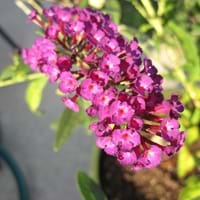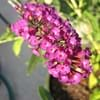Life Span
Perennial
Perennial
Type
Flowering Plants, Shrubs
Needled or Scaled Evergreen
Origin
Africa, America, Asia
Northwestern United States, Canada
Types
Lockinch, Petite Indigo, White Profusion
Not available
Number of Varieties
Not Available
Habitat
Along Railroads, River side, Roadsides
Lowland, Moist Soils, Swamps
USDA Hardiness Zone
5-10
5-7
Sunset Zone
H1, 2a, 2b, 3a, 3b, 4, 5, 6, 7, 8, 9, 10, 11, 12, 13, 14, 15, 16, 17, 18, 19, 20, 21, 22, 23, 24
A3, 1a, 1b, 2a, 2b, 3a, 3b, 4, 5, 6, 7, 8, 9, 14, 15, 16, 17, 18, 19, 20, 21, 22, 23, 24
Habit
Arching/Fountain-shaped
Pyramidal
Flower Color
Blue, Pink, Purple, Red, White
Light Yellow
Flower Color Modifier
Not Available
Bicolor
Fruit Color
Not Available
Brown, Sienna
Leaf Color in Spring
Gray Green
Dark Green
Leaf Color in Summer
Gray Green, Light Green
Dark Green
Leaf Color in Fall
Gray Green, Light Green, Yellow green
Dark Green
Leaf Color in Winter
Not Available
Dark Green, Bronze
Leaf Shape
Egg-shaped
Scale-like imbricate
Plant Season
Fall, Spring, Summer, Winter
Spring, Summer, Fall, Winter
Sunlight
Full Sun, Part sun, Partial shade
Full Sun, Partial Sun
Type of Soil
Loamy, Sandy, Well drained
Loam
The pH of Soil
Neutral, Slightly Acidic, Slightly Alkaline
Acidic, Neutral
Soil Drainage
Well drained
Well drained
Tolerances
Drought, Pollution, Salt, Soil Compaction
Pollution, Soil Compaction
Where to Plant?
Ground, Pot
Ground
How to Plant?
Seedlings, Stem Planting, Transplanting
Cuttings, Hardwood Cuttings, Rooted stem cutting, Seedlings
Plant Maintenance
Medium
Medium
Watering Requirements
Form a Soil ring to water efficiently, Water Deeply, Water twice a day in the initial period
Average Water Needs, Needs a lot of moisture in the growing season, when new, water every week
In Summer
Lots of watering
Lots of watering
In Spring
Moderate
Moderate
In Winter
Average Water
Average Water
Soil pH
Neutral, Slightly Acidic, Slightly Alkaline
Acidic, Neutral, Alkaline
Soil Type
Loamy, Sandy, Well drained
Clay, Loam, Sand
Soil Drainage Capacity
Well drained
Well drained
Sun Exposure
Full Sun, Part sun, Partial shade
Full Sun
Pruning
Cut or pinch the stems, Prune for shortening long shoots, Prune if you want to improve plant shape, Prune ocassionally, Remove damaged leaves, Remove dead or diseased plant parts, Remove deadheads, Remove shoots
Remove damaged leaves, Remove dead branches, Remove dead leaves
Fertilizers
All-Purpose Liquid Fertilizer
All-Purpose Liquid Fertilizer
Pests and Diseases
Downy mildew, Leaf spot, Spider mites
Armillaria root rot, Bark beetles
Plant Tolerance
Drought
Drought
Flowers
Yes
Insignificant
Flower Petal Number
Single
Not Available
Fragrant Bark/Stem
No
Yes
Foliage Texture
Medium
Fine
Foliage Sheen
Matte
Glossy
Attracts
Butterflies, Hummingbirds
Not Available
Allergy
Vomiting
Asthma, contact allergic dermatitis, Urticaria
Aesthetic Uses
Showy Purposes
Not Used For Aesthetic Purpose
Beauty Benefits
Not Available
Not Available
Environmental Uses
Air purification
Air purification
Medicinal Uses
Not Available
Bronchitis, Cold, Cough, Fever, Sore throat
Part of Plant Used
Flowers, Leaves
Branch, Inner Bark, Leaves, Wood
Other Uses
Showy Purposes, Used as Ornamental plant
Dugout canoes, Making deodorants, Medicinal oil, Paper pulp, Pulp can be used to make rope place mats and other goods, Used as an insecticide, Used to make baskets
Used As Indoor Plant
No
No
Used As Outdoor Plant
Yes
Yes
Garden Design
Edging, Feature Plant, Foundation
Feature Plant, Hedges, Screening / Wind Break
Botanical Name
Buddleia davidii
THUJA plicata
Common Name
Butterfly Bush, Summer Lilac, Butterflybush
Giant Arborvitae, Green Giant Arborvitae, Western Arborvitae, Western Red Cedar
In Hindi
Butterfly Bush
Pacific redcedar
In German
Schmetterlingsstrauch
Riesen-Lebensbaum
In French
buisson de papillon
Thuja plicata
In Spanish
arbusto de las mariposas
Thuja plicata
In Greek
Butterfly Μπους
Thuja plicata
In Portuguese
arbusto de borboleta
Thuja plicata
In Polish
Butterfly Bush
Żywotnik olbrzymi
In Latin
papilio rubo
Thuja plicata
Phylum
Spermatophyta
Pinophyta
Class
Dicotyledonae
Pinopsida
Family
Scrophulariaceae
Cupressaceae
Clade
Angiosperms, Asterids, Eudicots
Not Available
Tribe
Not Available
Not Available
Subfamily
Not Available
Not Available
Number of Species
Not Available
Season and Care of Butterfly Bush and Western Red Cedar
Season and care of Butterfly Bush and Western Red Cedar is important to know. While considering everything about Butterfly Bush and Western Red Cedar Care, growing season is an essential factor. Butterfly Bush season is Fall, Spring, Summer and Winter and Western Red Cedar season is Fall, Spring, Summer and Winter. The type of soil for Butterfly Bush is Loamy, Sandy, Well drained and for Western Red Cedar is Loam while the PH of soil for Butterfly Bush is Neutral, Slightly Acidic, Slightly Alkaline and for Western Red Cedar is Acidic, Neutral.
Butterfly Bush and Western Red Cedar Physical Information
Butterfly Bush and Western Red Cedar physical information is very important for comparison. Butterfly Bush height is 7.50 cm and width 4.00 cm whereas Western Red Cedar height is 1,520.00 cm and width 760.00 cm. The color specification of Butterfly Bush and Western Red Cedar are as follows:
Butterfly Bush flower color: Blue, Pink, Purple, Red and White
Butterfly Bush leaf color: Gray Green
Western Red Cedar flower color: Light Yellow
- Western Red Cedar leaf color: Dark Green
Care of Butterfly Bush and Western Red Cedar
Care of Butterfly Bush and Western Red Cedar include pruning, fertilizers, watering etc. Butterfly Bush pruning is done Cut or pinch the stems, Prune for shortening long shoots, Prune if you want to improve plant shape, Prune ocassionally, Remove damaged leaves, Remove dead or diseased plant parts, Remove deadheads and Remove shoots and Western Red Cedar pruning is done Remove damaged leaves, Remove dead branches and Remove dead leaves. In summer Butterfly Bush needs Lots of watering and in winter, it needs Average Water. Whereas, in summer Western Red Cedar needs Lots of watering and in winter, it needs Average Water.





